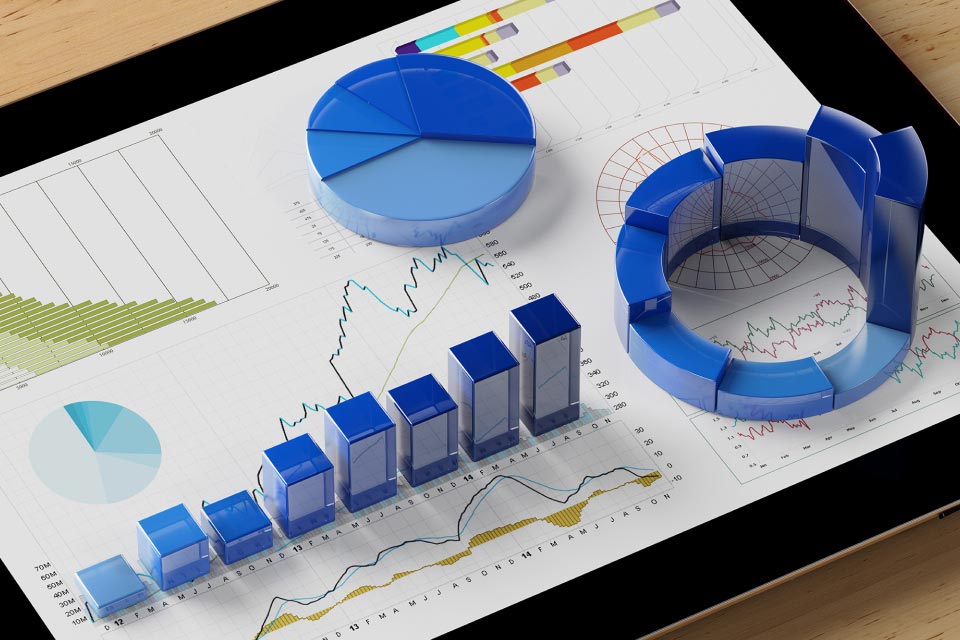Technical analysis in Forex trading provides you with significant market trends, reversals and fluctuations and in turn helps you long and short term trades. It also enables traders to determine entry and exit prices to maximise market returns. Guesswork can only take you so far in your Forex trades. In order to make informed decisions based on data and numbers, you need to understand technical analysis in Forex better. Let’s take a look to understand what it entails:
What is technical analysis in Forex?
Technical analysis refers to studying the demand and supply of the currency pair and its effect on future market prices. The technical indicators that help with the analysis allow traders to identify market trends and opportunities through a currency pair’s trading volume and price fluctuations.
Top technical analysis indicators you should know
1. Moving averages
Moving averages are used to cancel out any irrelevant price fluctuations in the Forex market and identify ongoing market trends. It also helps identify the market direction by calculating the average currency pair price and comparing it with the current currency pair’s price. For example, if the currency pair price of EUR/USD is 2, whereas the average currency pair price is 4, it indicates that the currency pair is currently trading at an extremely low price, suggesting a downward market direction.
2. Relative Strength Index (RSI)
The RSI indicator can identify oversold and overbought market conditions. Any reading below RSI 30 indicates the currency pair is undervalued (oversold), which signals an upward market movement in the future. This means traders should buy more of the currency pair expecting the prices to rise. Readings above 70 indicate that the market is overvalued (overbought), indicating a downward future market movement. This means traders should sell the currency pair as the prices are expected to fall in the future.
3. Bollinger bands
Bollinger bands provide traders with entry and exit points. It works the same way as the RSI indicator and tells traders when a currency pair is overbought or oversold. It consists of three lines:
- The middle line represents the actual currency pair price
- The upper line indicates the upper price movement
- The lower line indicates the downward price movement.
The currency pair price is said to trade mostly between the upper and lower line.
4. Moving average convergence divergence
The MACD indicator helps traders find bullish or bearish market movement. A bullish market sentiment occurs when the MACD line crosses the signal line from below, and a bearish market movement occurs when it crosses the signal line from above.
- Bullish market movement signals traders to enter the market and buy more of the currency pair to maximise profits
- Bearish market movement signals traders to exit the market and sell more of the currency pair to minimise losses
5. Stochastic oscillator
The Stochastic oscillator is widely used to identify trend reversals. It compares the currency pair’s closing price to the price range in a time period.
It consists of a signal line and the indicator line itself. Whenever these two lines intersect, it depicts a shift in the current trend.
- Whenever the closing price is near to the price range’s lower range for a long time, it indicates a bearish trend reversal
- Whenever the closing price is near to the price range’s upper range for a long time, it indicates a bullish trend reversal
6. Fibonacci retracements
Fibonacci retracements provide traders with market entry points, exit points, stop loss levels and profit levels. It also helps identify support and resistance levels which can signal market trend reversals. While support price points send an upward market movement signal, resistance price sends a downward market movement signal
Top tips to trade with Forex technical indicators
- Read daily and weekly charts thoroughly: Understanding and using daily and weekly charts help you identify significant trends in the forex market. These trends, in turn, assist you in making profitable exit and entry decisions.
- Use market momentum to your absolute advantage: Every time you enter a trade, make sure that your entry price is supported through a technical indicator like RSI or the oscillator. If you trade without momentum in the market, you can lose out on significant profits. Hence, it is always advised to use such momentum indicators to analyse all your price points.
- Time all your trades: It is essential that you time all your trades to ensure you do not miss out on any turning price point in the long term. Timing the trades maximises your profits and protects you against any unexpected risks.
- Chart the other instruments simultaneously: You can learn a lot about the market momentum in the Forex market by charting other financial markets in the same time frame. For example, an increase in the exports of the USA could appreciate the US dollar in the Forex market, and a fall in the Dow Jones Index could lead to a depreciation in the value of USD.
Technical indicators to maximise your profit potential today
Technical indicators help you determine the currency pair's future prices, providing exit and entry points leading to profitable trades. Blueberry Markets offer complete transparency when it comes to currency pair price movement to make your forex trading experience completely seamless. Sign up for a live trading account or try a risk-free demo account.




